
Highway Farm has many pockets of inspiration for the outdoor early years enthusiast. I always liked their original sandpit pictured above and below. It’s got many attributes that I find appealing and add value to the children’s play including a couple of different levels and areas of sand and the addition of posts within and around the sandpit. It has always been well used and much loved by the children.

Given the interest in the sand area, when the older classes outdoor space was being developed back in 2015, the children and staff decided to make an even bigger and better sandpit. Like everything else at Highway Farm, it is a home-made and bespoke affair.

The advantage of a DIY approach is that you develop an understanding of what can be done and you can experiment until you get things the way you want. The freedom to experiment, make mistakes and learn from them is an important part of the ethos at Highway Farm that the staff and children recognise and value.
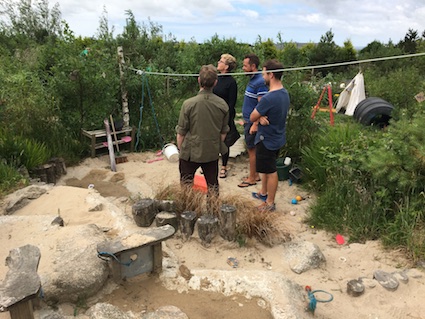
From observations of children playing in the other sand pit, the staff knew how much the children enjoyed the interplay between sand and water. Thus part of the sandpit was created from concrete to provide clear channels and run-offs. If you look below you can see this – there is a collection pool at the bottom of the sand pit but a child-sized overflow channel allows for the water to move out of this area when the area is flooded or a child wants to direct water this way.
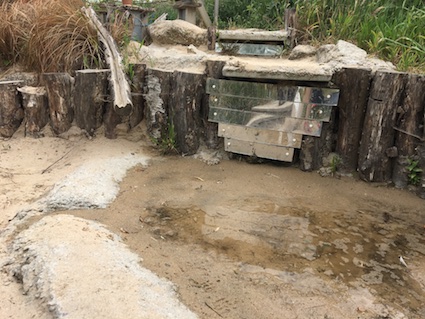
The mirrors placed underneath the waterfalls add curiosity. It means children can see themselves working or observe the distortion that happens when water fall over the mirrors. By using cheap mirror strips, it is easy to repair and replace these on an ongoing basis.
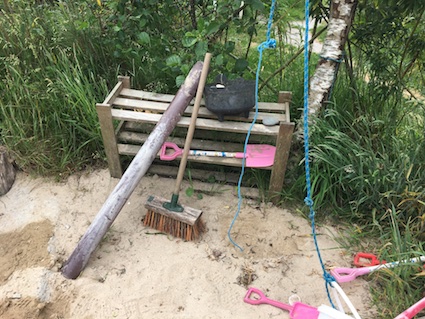
Another informal addition has been a mini shelving unit. It means there is a place to leave and place items. However, importantly, the toys tend to be left in situ from day to day so that the children can continue their play where they left off.

I like that the steps to the left are both steps and sandpit levels. Even if a group of children decide to dig down deep these steps are unlikely to be dislodged. I was also intrigued by the mini water runways created by carving a V-shaped notch out of a branch. This is so simple but suddenly challenges how a child may perceive water flow. For example, does a big channel work better than a smaller, neater channel? Several of these were dotted about.
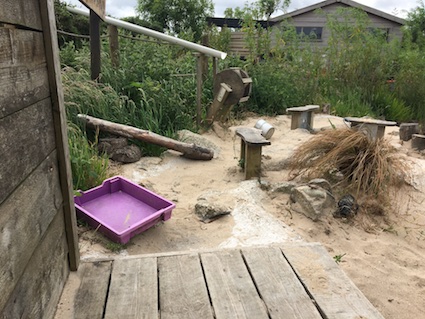
At the highest point of the sand pit there is a platform. It provides a vantage point to survey the sand pit. This can help with decision-making about what to do in this space. After all there’s a lot of possibilities…
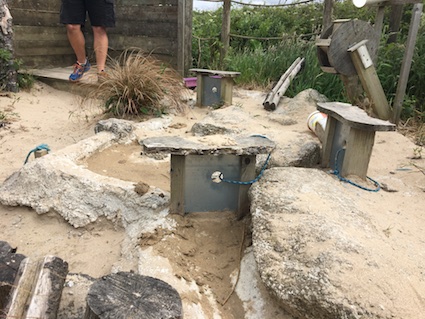
There are also gates in the concrete channels which can be used to control the flow of water. Another interesting feature is the present of a water wheel that would work equally well if used with dry sand or water.
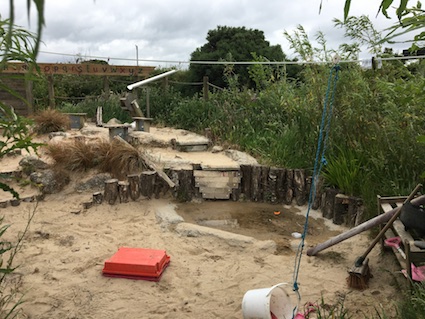
As well as transporting at a low level, up high there’s a pully system in place which enables sand and water to be moved in a different way. Pulleys and sand pits are natural friends and lift the learning potential even higher.
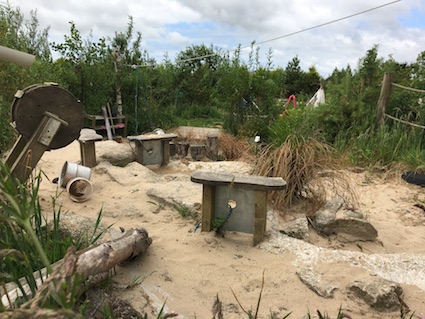
I hope you’ve enjoyed the photos of the Highway Farm sandpit. For more information about managing sandpits, then visit this blog post which will help with busting myths around sand play and provide lots of practical advice.
his blog post was originally published in July 2017.






























I love this. We had a large sand play area but our ofsted inspector said it had to be covered and so it had to come out less than three months after I had put it in. How do you cover the area?
Hello Kate
I’m sorry to hear your Ofsted inspector requested this – clearly he or she had not read the RoSPA guidance. If you look at the link to the sand pit myths blog post then you will find the link to RoSPA’s advice and other organisations’ practical tips.
However I also appreciate, that informed or otherwise, if your inspector has made a request that you are obliged to put in place, then so it must be. There’s lots of options – the simplest usually being a net that can be put over. I’ve used a tarp in the past that was kept in place with tyres.
What matters is that the sandpit is properly managed, a net, cover or otherwise. This particular example, has no cover, it is well used and sensibly managed in line with the risk benefit assessment for the outdoor spaces.
Hey, great sand pit! I’d want this, let alone my kids! Passing this info on to a local mum.
Yes – my thoughts too – just interesting and fun. Highway Farm do offer a holiday programme for older children too and there’s a parent/toddler group that also operate on the same site.